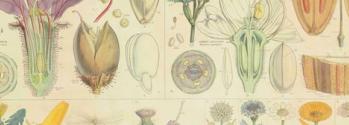
Public engagement is an important part of our work.
The specimens held in the University Herbarium have significant scientific and historical value and our outreach efforts to hightlight our collections include interviews with news outlets, talks and panel discussions, tours and herbarium-themed craft activities. This work helps to ensure the collections are actively used for research and teaching, sufficiently funded, and protected for many years to come.
The herbarium is an active research institution and not open to the public. Please contact us to discuss any public engagment enquiries.
Cambridge Festival 2024
Do you know how plants get their scientific names? Discover the fascinating collections of our Herbarium in three newly released videos as part of the Cambridge Festival, produced with the support of the Cambridge Philosophical Society. Learn how plant specimens can be preserved for centuries, how we use them to name species, to study evolution, and to track changes in plant diversity.
What is a Herbarium? The scientific and historical treasures of the Cambridge University Herbarium
Take a quick dive into the fascinating world of the Cambridge University Herbarium. This giant archive of plant diversity contains 1.1 million dried plants collected worldwide over 3 hundred years, as well as thousands of botanical art pieces. Have a glimpse at some of our most iconic specimens and illustrations, and learn about the work we do behind the scenes to facilitate research and education in the fields of Natural Sciences and Humanities.
How herbarium specimens are prepared at the Cambridge University Herbarium
A quick walkthrough of how plant specimens end up in the collections of the Cambridge University Herbarium, from the moment they are collected, pressed and dried, to the moment they are laid away in compactors, safely attached to a sheet of archival paper.
How plants get their scientific names, a short introduction to plant taxonomy
Find out how plant species are described and get their scientific names in this quick introduction to the field of Plant Taxonomy. Dr Anne Dubéarnès, Special Collections Researcher at the University of Cambridge Herbarium, explains what types of information taxonomists use to delimit species, how they decide to group plants together, and how they share their results with professional and amateur botanists worldwide.



